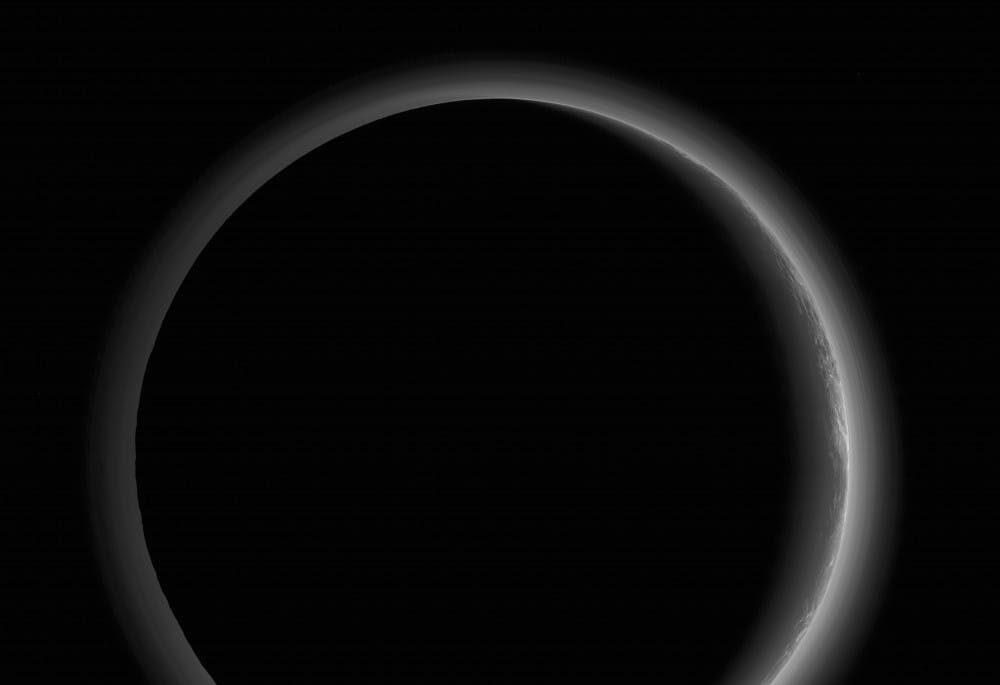Seven years ago, ASU professor Steve Desch thought there might be a liquid ocean sitting below the surface of Pluto. After years without quantifiable evidence, new developments on Pluto may leave others with the same suspicion.
When Desch, a theoretical astrophysicist at the School of Earth and Space Exploration published a research paper on thermal evolution for Kuiper Belt objects, he and his cowriters foreshadowed the idea of Kuiper Belt objects like Pluto containing a liquid ocean. Although this notion wasn’t a common one, a new Plutonian discovery may bring the topic right back into consideration.
One of the stranger and more unexpected astronomical discoveries of the year came earlier this month when a group of astronomers revealed that distant planetary dwarf Pluto is emitting X-rays.
Desch said this behavior isn’t uncommon among other planets, but it's an anomaly given that the dwarf planet is so far from the sun and doesn't have a magnetic field. Prior to the discovery on Pluto, X-ray emission has been recorded from as far as Saturn. But Saturn has a magnetic field and is nearly 2.2 billion miles closer to the sun than Pluto.
One of Desch’s former Ph.D students, Jason Cook, who co-wrote the Kuiper Belt Thermal Evolution paper, said making the discovery and continuing to learn about Pluto isn’t an easy task.
“You don’t expect X-rays from Pluto,” Cook said. “And that’s part of where the interest comes from. It’s fascinating when we find things when we don’t expect them.”
What many researchers are asking is how X-ray emissions on Pluto are possible. While there isn’t yet a definitive answer, Carey Lisse, a professor at Johns Hopkins University and one of the head researchers on the thermal team, said some of the key aspects that make X-ray emission possible are neutral gases and solar wind.
Solar wind, a very thin but expansive wind made up of particles from the sun, is pushed throughout the solar system and continually pushes against all the objects in the solar system, Pluto included. In Pluto’s case, it left a tail of ions believed to have contributed to the enhanced X-ray emissions.
Desch said the discovery is exciting, and it could shed light on the dwarf planet.
“Pluto is a big mystery,” Desch said. “So if you’re trying to understand how Pluto got there, what’s going on inside Pluto and by extension, other Kuiper Belt objects, then you want to be able to analyze it in as many ways as possible, and it is surprising that this X-ray is a new tool for understanding Pluto.”
To Desch, the new discovery can potentially come as validation. Through his research, Desch theorized there can be a liquid ocean below Pluto’s surface. While he said most researchers in his field believed Pluto to be a dry and baron surface, he came to a different conclusion.
"There has to be an input of gases from Pluto’s interior to its surface to explain those X-ray emissions,” Desch said. “That would be significant because it provides some strong corroborating evidence that there’s subsurface liquid on Pluto, and that’s exciting to me. I published some work saying it’s big enough and has enough radioactive elements inside it that it should generate the heat, trap the heat and melt the ice. The expectation on the New Horizon team was overwhelmingly that Pluto should be a dead world.”
Although Desch could be right, his theories still cannot be proven. Lisse said that although Desch’s theory is interesting and worth looking into, that conclusion cannot yet be made.
“I don’t necessarily see the connection,” Lisse said. “What the X-rays tell you is that Pluto is losing neutral gas.”
Desch said these findings give a better insight on Pluto, a still relatively mysterious and unknown part of the solar system.
Although Desch’s research isn’t immediately affected by the new findings, further analysis of the emissions may change his research in the future.
“This new result doesn’t immediately affect my research,” he said. “What it does do though, is suggest that Pluto’s atmosphere is being lost at a great rate. If this rate can be quantified by further X-ray observations and it turns out to be significant and hard to explain, that’s where my models would get involved.”
Reach the reporter at Emmillma@asu.edu or follow @Millmania1 on Twitter.
Like The State Press on Facebook and follow @statepress on Twitter.




